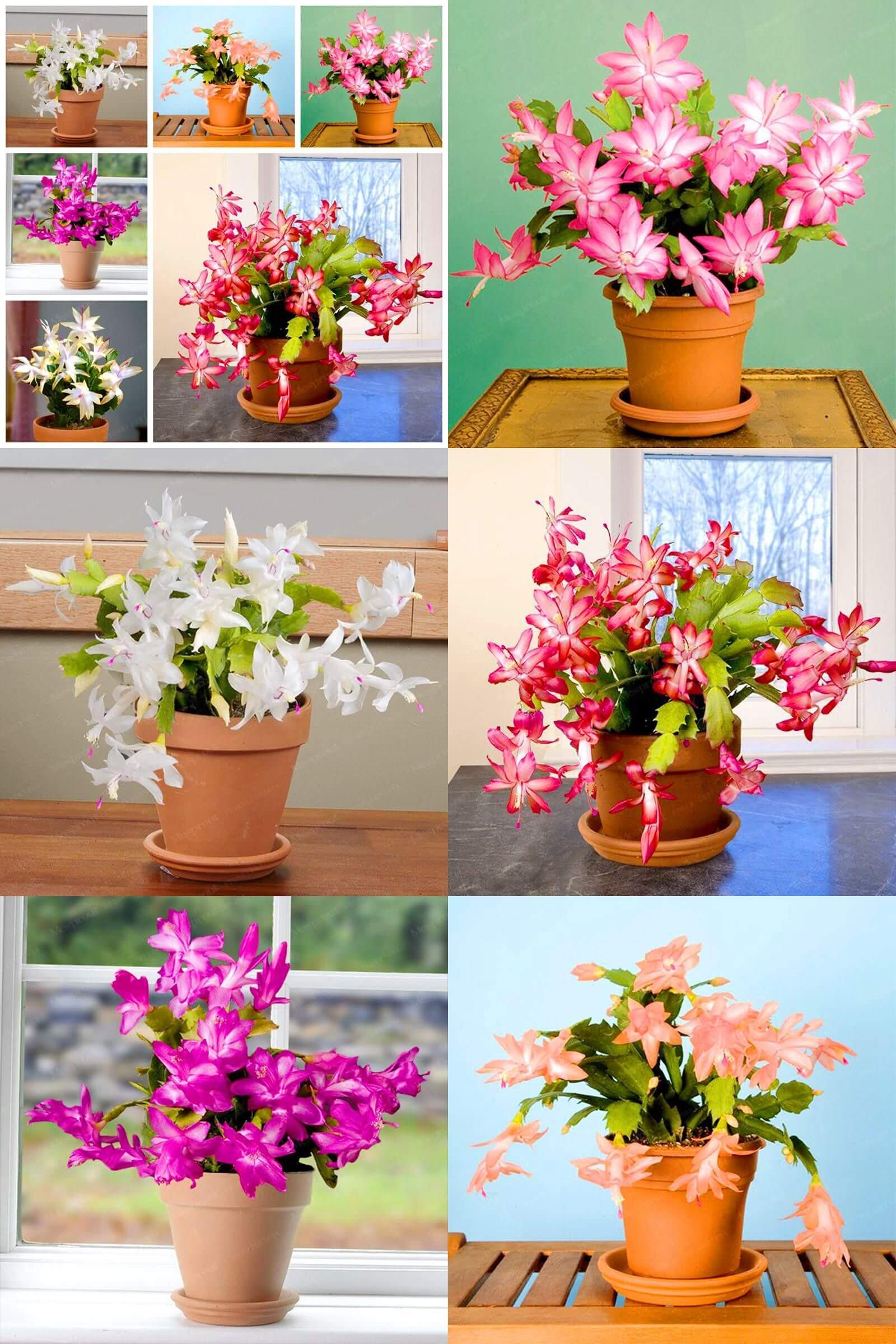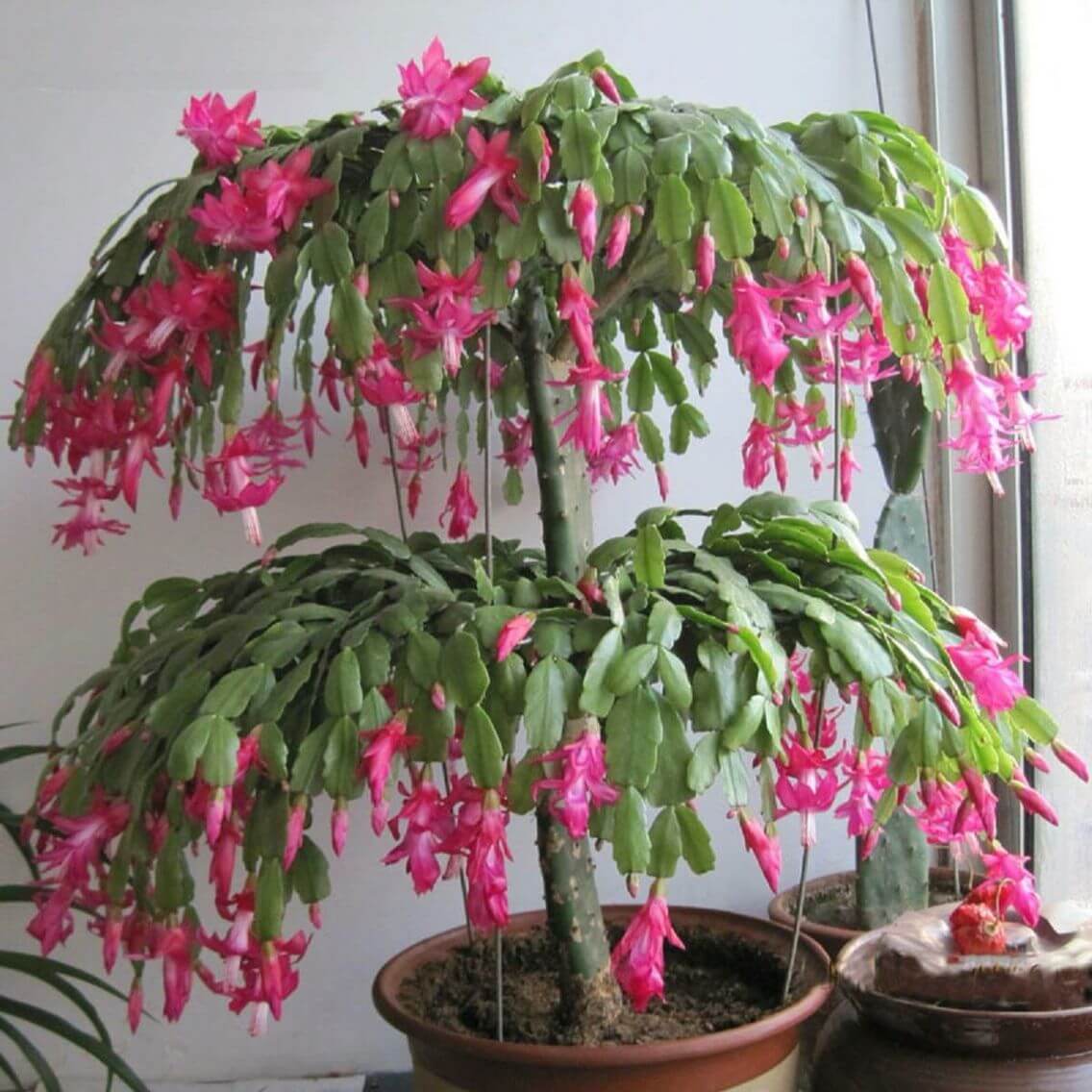Discover essential care instructions for Zygocactus flowers, also known as Christmas Cacti. Learn how to provide the right light, water, temperature, and maintenance to ensure stunning blooms throughout the year. Enhance your indoor garden with these tips and enjoy the beauty of Zygocactus flowers.
Zygocactus is a common name for the Thanksgiving cactus (Schlumbergera truncata syn.Zygocactus truncata). It is sold as “Christmas cactus“, “thanksgiving cactus” and “holiday cactus” in several stores during the holidays. The true Christmas cactus (Schlumbergera x buckleyi) is not very commercialized. The Thanksgiving cactus blooms at the end of November, while the Christmas cactus blooms around Christmas, and the cultivars vary. The tropical Thanksgiving cactus produces purple, pink or white flowers in response to cooler temperatures and shorter days in late fall. The small and flat segments of the green stem are smooth, except for the jagged edges. There are no thorns as seen in many desert cacti. Flower buds are formed at the tips of the upper segments.

- Reduce watering in late summer, irrigating the Thanksgiving cactus only when the top of the soil feels completely dry. Stop all fertilizer applications at this time.
- Place the Thanksgiving cactus in an area that receives 13 hours of complete darkness each night and bright sunshine every day, beginning in mid-September for the holiday bloom. Keep nighttime cold temperatures between 55 and 65 degrees Fahrenheit to force the cactus to produce flower buds. Provide a dark treatment for eight weeks before moving the cactus to a cool, sunny place.
- Increase irrigation after dark treatment. Water the Thanksgiving cactus when the soil surface feels dry, providing enough water to moisten the soil evenly. Empty the drip tray under the pot after each watering.
- Resume fertilization when flowering ends, usually in late winter or early spring. Dilute 1/2 teaspoon of a complete fertilizer, such as a 24-8-16 mixture, in 1 gallon of water and irrigate the cactus with the solution every two weeks.
- Repot a Thanksgiving cactus every three years after flowering, or when it exceeds its pot. Plant in a pot with a drainage hole that is one size larger than the previous one, using a well-drained potting medium. Plant the cactus at the same depth in the new pot, as it was growing previously.
Things you will need
24-8-16 soluble fertilizer
Watering can
Flower pot
Potted soil
Tip
The cactus of thanksgiving rarely experiences problems of plagues or diseases. You can suffer root rot in excessively wet or poorly drained soils. Aphids, mites and other common pests of indoor plants can also infest the cactus, but you can remove them with a stream of water or by wiping the leaves with a damp towel.

Zygocactus (Zygocactus truncatus orchid)
Light: lots of light; no sun
Temperature: 68° to 72° F – 20° to 22° C
Humidity: 20% to 30%
Soil: black and “cactus”
Watering: weekly during growth
(light watering); monthly during resting period
Spraying: weekly
This plant produces a great number of violet flowers, especially when grafted on the Pereskia aculeata. It needs a resting period of about six weeks starting in October. During that time, fertilizing must be stopped and watering slowed down. The rest will permit the floral buds to form. Moving the plant or changing its orientation should be avoided, because any disturbance of this sort may cause the buds or flowers to fall off. As soon as buds appear again, resume normal maintenance. Immediately after blooming, you may proceed with repotting and with propagation by slips. Cut some young leaves and root them in sandy soil.
This plant needs a special mixture of black soil and cactus soil.